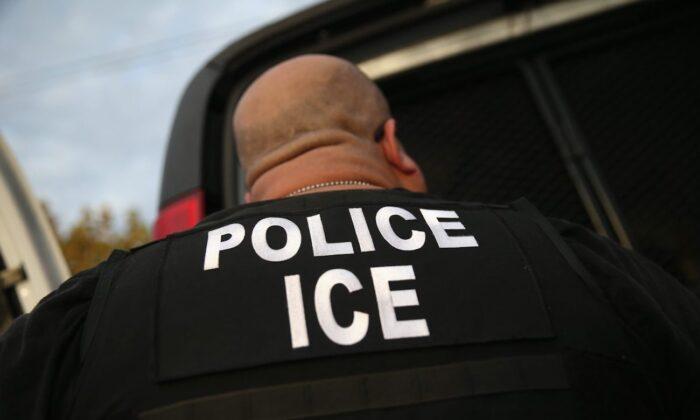A federal judge issued an order on Wednesday that stops Immigration and Customs Enforcement (ICE) officials from making civil immigration arrests near courthouses in New York State.
Rakoff characterized the ICE arrests of illegal immigrants as “disruptions and intimidations artificially imposed by an agency of the federal government in violation of long-standing privileges and fundamental principles of federalism and of separation of powers.”
Brooklyn District Attorney Eric Gonzalez and New York Attorney General Letitia James sued the Department of Homeland Security (DHS) and ICE in September 2019 for the practice.
They alleged that the ICE arrests in and around New York state courthouses “are the disruptions of New York courts and the intimidation of parties and witnesses,” and such arrests “make certain parties and witnesses fear coming to court,” as well as create “temporary chaos” that “disrupts court proceedings and makes it impossible for judges to do their jobs effectively.”
Rakoff, in siding with the New York officials, wrote that “the Court declares ICE’s policy of courthouse arrests, as now embodied in the [ICE] Directive, to be illegal.”
In a statement on Thursday, ICE said it is “currently reviewing the court’s order to determine the appropriate course of action.”
Rakoff noted how the plaintiffs calculated that ICE carried out some 20 “actions” at or near New York state courthouses in 2015, and 28 in 2016. The number increased to 161 in 2017, 107 in 2018, and 173 in 2019. Rakoff noted that before 2017, ICE officers were required to avoid courthouse arrests “except in very limited circumstances involving high-priority removal targets.”
From this, Rakoff wrote that the 2018 ICE directive “simply memorialized the policy and practices that had already been put in place the preceding year,” referring to both the president’s 2017 Executive Order and a “2017 Implementing Memo” issued by then-DHS Secretary John Kelly.




